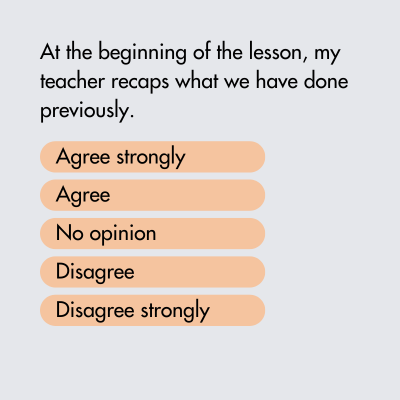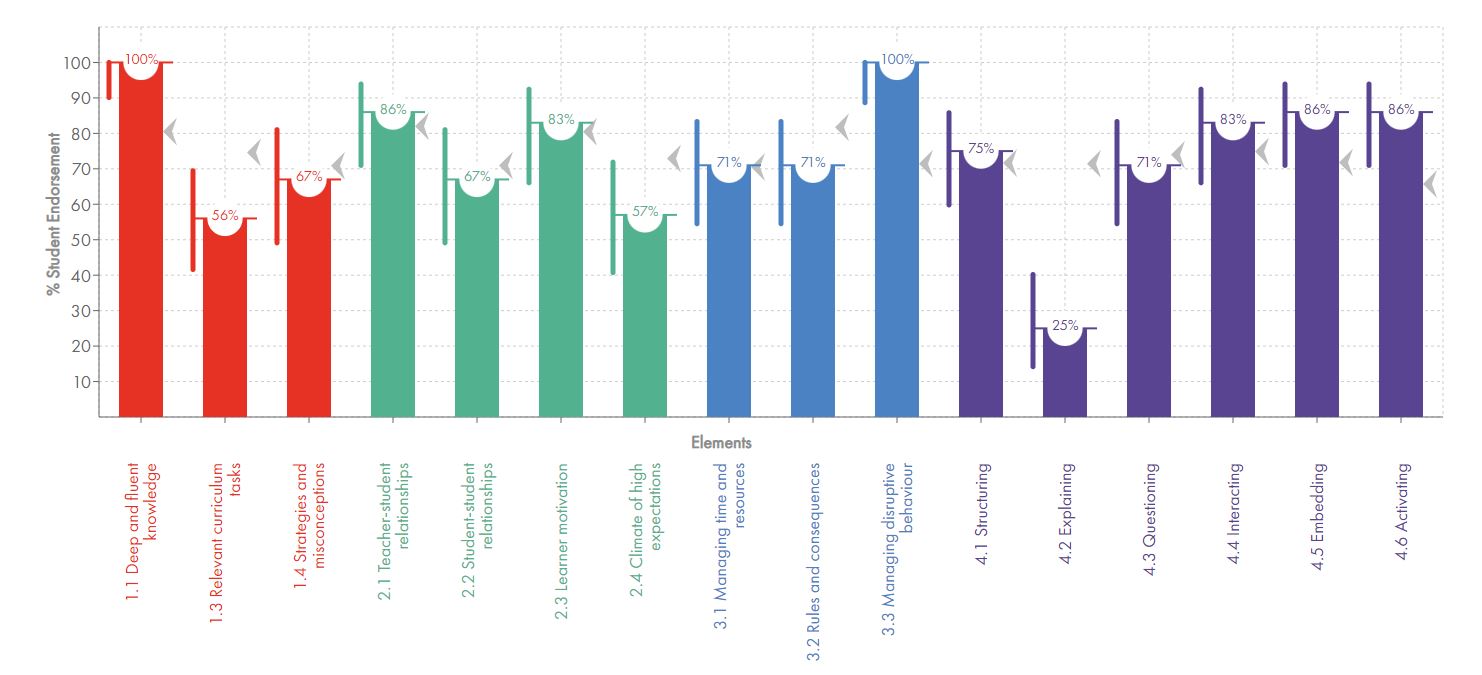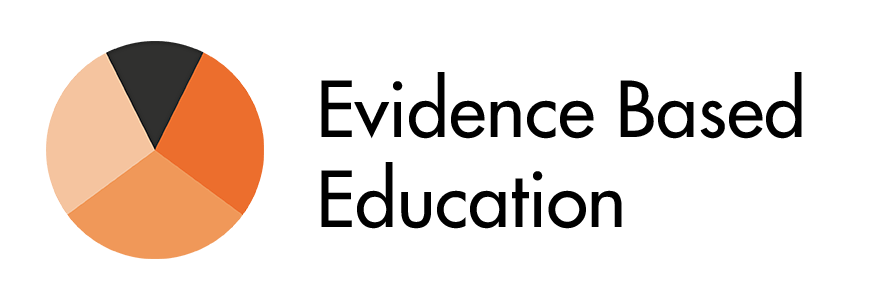Learner surveys
Act on personalised feedback, to get better together.

Get better, together

Act on personalised feedback

Develop expertise

Embed great teaching
Feedback from the most important people

Learners have more collective experience of the classroom environment and teaching practices than anyone else. Build a more equitable classroom by ensuring every learner’s voice is heard.
Learner surveys (accessible for reading ages 5-16+) generate feedback that allows each individual teacher to:
- Identify strengths and areas for improvement
- Set specific goals for improving their classroom practice
- Measure improvement with insights from their learners
Identify a development area
The strong, overarching goals with feedback from the learner surveys are to promote equity and provide information to the teacher to help inform their professional learning. The feedback provides additional insight that indicates strengths and areas to consider as possible development priorities.
Teachers can generate feedback from each of the four Dimensions from the Model for Great Teaching.

“The Great Teaching Toolkit places the teacher, rather than the reviewer, at the heart of the process. They get to choose which students to survey, which aspects of their practice to survey, and they can choose whether to share results with their reviewer (or not), giving the teacher a sense of agency over their own professional development.” (Read full case study here.)
Claire Badger
Senior Leader (Teaching & Learning)
Senior Leader (Teaching & Learning)

Give every learner a voice
Teachers can choose from four different versions of the Model for Great Teaching survey to generate feedback, depending on the reading age of their learners:
- Version B: Suggested for learners with a reading age of 5-7; questions are both text and video. Version B includes questions only on Dimensions 2-4.
- Version C: Suggested for learners with a reading age of 8-14; questions are both text and video.
- Version D: Suggested for learners with a reading age of 11-16; questions are text only.
- Version E: Suggested for learners in a post-16 context; questions are text only.
All of the questions are closed responses, ranging from ‘Strongly Agree’ to ‘Strongly Disagree’, or emoji responses for younger reading ages. See the images below as an example.

A survey question from Element 4.1 (Version D)

A question from the Model for Great Teaching survey (Version B)
“The survey was such a useful, informative diagnostic tool that really empowered me to take advantage and take control of my own professional learning.” (Read full case study here.)
Mike Downes
Head of History
Head of History

Act on personalised feedback

The survey data is confidential for every teacher. Once five teachers have completed a survey, we send anonymised aggregated survey data to a Senior Leader’s account to identify school-wide strengths and areas for development.
This graph shows responses to the Model for Great Teaching survey. Each bar represents an element of practice and the collective agreement of students in relation to statements about classroom practice.
In this Model for Great Teaching survey, this teacher appears to have a real strength in managing disruptive behaviour, but also in elements of Dimension 4.
This is a pocket of expertise a school leader could identify to support, coach or guide other colleagues who are working on similar elements.
Develop adaptive expertise
Develop adaptive expertise in your chosen element with one of the Great Teaching Toolkit courses.
All of the courses incorporate structured collaboration with colleagues to help teachers to get better, together!
Teachers can also draw upon 500+ resources, ranging from blogs, videos, podcasts and eBooks, mapped to the Dimensions and Elements of the Model for Great Teaching.
“We’ve already had great feedback from colleagues who’ve found the surveys easy to use and love the way the information generated is displayed. One of the members of staff described them as ‘transformative’, as student feedback had really opened his eyes to how he supported students in planning and regulating their own learning.” (Read full case study here.)
Eleanor Richards
History Teacher, Learning and Teaching Advisor
History Teacher, Learning and Teaching Advisor

Check progress
Following a period of integrating a new strategy or technique into your classroom practice, generating more feedback is really important to check your progress.
The image below shows the breakdown of scores over three of the survey items, with the three bars of each showing feedback from October to April, left to right. This shows an especially noteworthy improvement for “My teacher encourages us to work independently” and “When we are stuck, our teacher encourages us to work out the answer without help”.

Embed Great Teaching
Every student deserves a great teacher. Great teaching is for everyone.
Enter the number of teachers below to see how much a Great Teaching Toolkit membership costs.
For more than 100 licences in one school/college, or to discuss group and MAT rates across multiple schools, please contact us.
Frequently Asked Questions
How can I provide my colleagues with professional development bespoke to their needs?
The learner surveys in the Great Teaching Toolkit enable individual teachers to identify development areas bespoke to their needs.
Learners have more collective experience of the classroom environment and teaching practices than anyone else, and their feedback can be a powerful tool for teacher learning, offering additional insight that allow teachers to personalise their professional development.
How can I provide my colleagues with a framework to get feedback on their practice?
The learner surveys in the Great Teaching Toolkit cover each of the four Dimensions from the Model for Great Teaching – a summary of the best available research evidence on the things teachers do, know and believe that has the biggest impact on student learning.
Can we try the surveys before we buy?
Yes, you can sign up for a Great Teaching Toolkit: Starter Account, which allows you to see the platform, try a student feedback survey, and sample lessons from the courses.
Click here to create your account.
How can I identify priority areas for my school’s professional development?
While the survey data is confidential for every teacher, once five teachers have completed a survey, we send anonymised aggregated survey data to a Senior Leader’s account to identify school-wide strengths and areas for development.












